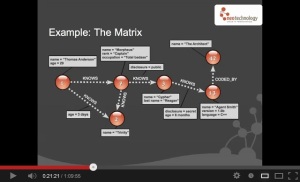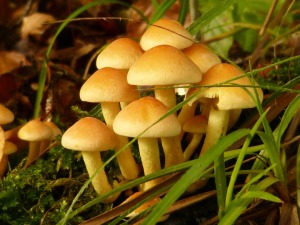Free webinar: Putting all species in a graph database
Biology + Technology = OTOL
 One of the developers of the Open Tree of Life demonstrates Thursday, during a free webinar, how graph databases are used to construct a tree of life. The lecture is organized by Neo Technology, which is the maker of Neo4j, an open-source database that is used for OTOL.
One of the developers of the Open Tree of Life demonstrates Thursday, during a free webinar, how graph databases are used to construct a tree of life. The lecture is organized by Neo Technology, which is the maker of Neo4j, an open-source database that is used for OTOL.
Stephen Smith, an ecology and evolutionary biology professor at the University of Michigan, is going to explain how Neo4j and other digital technologies are assisting in constructing the tree of life. Starting at 10:00 PDT (19:00 CEST), he will also discuss other aspects of the interface of biology with next generation technologies.
“Our project is building the tools with which scientists in the community can continually improve the tree of life as we gather new information. Neo4j allows us to not only store trees in their native graph form, but also allows us to map trees to the same structure, the graph. So in fact, we are facilitating the construction of the graph of life,” says Smith.
Neo4j approached the Open Tree of Life team to present a webinar because it is a project that utilizes the Neo4j graph database to represent the interconnectedness of biological data. The company considers the project a great example of how a graph database can better model the natural world.
The online lecture is intended for a broad audience including beginner computer programmers, advanced hackers, data scientists, natural scientists, and anyone interested in the cross-section of science and technology, especially data modeling. Over 150 people have already registered online.
The registration form: LINK
Update: The video from this webinar is available on vimeo: http://vimeo.com/67870035
Building an API for the Open Tree of Life database
Do you want an app for this?
 The developers of the Open Tree of Life would like to know from the phylogenetic community what kind of information they want to extract from its database when the first draft is released later this year. With those preferences, it is possible to develop an API that gives scientists the opportunity to build their own websites or software packages that use the data.
The developers of the Open Tree of Life would like to know from the phylogenetic community what kind of information they want to extract from its database when the first draft is released later this year. With those preferences, it is possible to develop an API that gives scientists the opportunity to build their own websites or software packages that use the data.
An API (application programming interface) is a digital tool that allows one website or software program to “talk” to another website to dig up certain pieces of data. For instance, a lot of people use Tweetdeck to navigate the ongoing bombardment of messages in the Twittersphere. In that case, Tweetdeck is connecting to Twitter, through its API, to receive and order the messages according to the preferences of the user.
In case of the Open Tree of Life, an API gives researchers advanced access to the data of about two million species, the phylogenies that have been created to illustrate possible relationships between them, and the underlying data and methods of synthesis. “For example, it will be possible to select smaller trees for specific species or find out how many studies there are for a particular node within the database,” says Karen Cranston, the lead investigator of the project. (more…)
“We need a sense of ownership of phylogenetic trees”
Where are the fungi datasets?
 A couple thousand fungi phylogeny studies have been published in the past twelve years. Clark University postdoc researcher Romina Gazis has gone through all of them. Now she is working on a bigger challenge: finding all the trees and datasets that were the foundation of those studies.
A couple thousand fungi phylogeny studies have been published in the past twelve years. Clark University postdoc researcher Romina Gazis has gone through all of them. Now she is working on a bigger challenge: finding all the trees and datasets that were the foundation of those studies.
Ideally, all scientists who publish a phylogenetic tree would also deposit the datasets they used to create such trees at a publicly available online database. That allow other researchers to synthesize data from different sources to advance the knowledge about relationships between certain species and their evolutionary history.
Unfortunately, most of those datasets are not publicly available. Gazis only found datasets for about a quarter of the two-thousand fungi articles she surveyed. “Around 600 studies had tree files available, but not necessarily complete,” she concluded. “Some scientists deposited one but not all the trees.” (more…)
Puzzling:
Connecting millions of pieces
Creating the entire tree of life is like completing a jigsaw puzzle with more than two million pieces. And to make it even harder; the illustration of how the solved puzzle would look like is missing.
No one knows precisely how all pieces are related.
This disparity is unmistakably demonstrated by disagreements between evolutionary biologists about how certain species and branches are linked together. Throughout the years they have created a large variety of trees with specific groups of species that contradict each other. For example, one researcher maintains that species A is the closest living relative of species B, but another scientist thinks that species C is actually most closely related to B. (more…)


